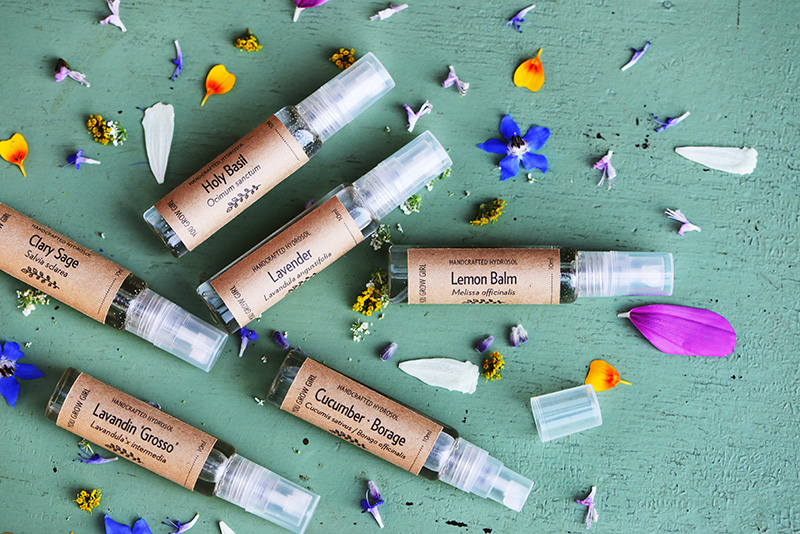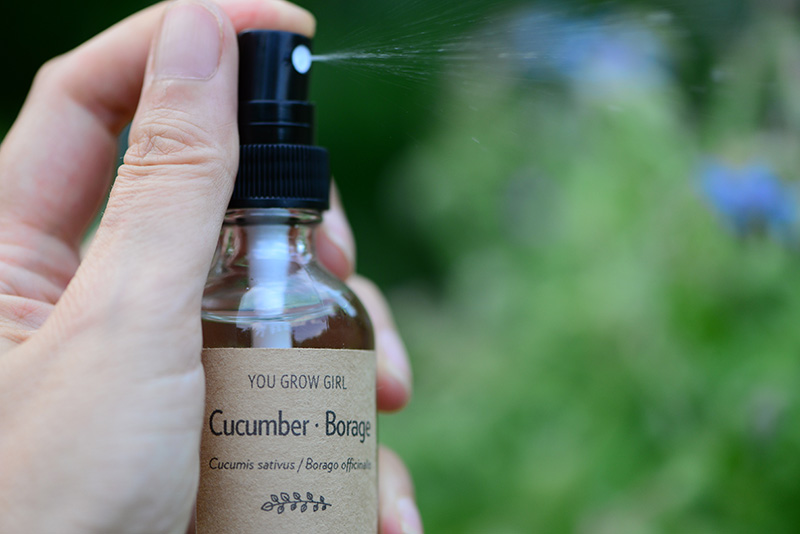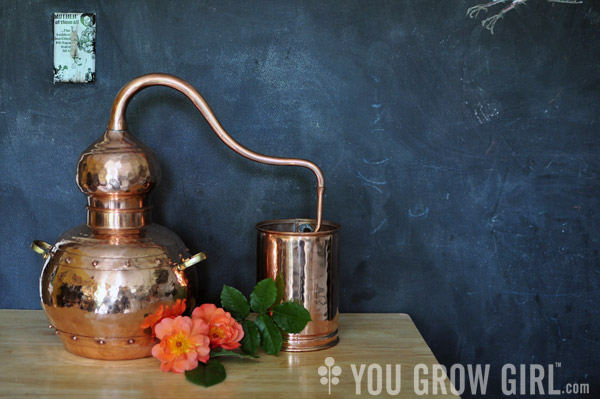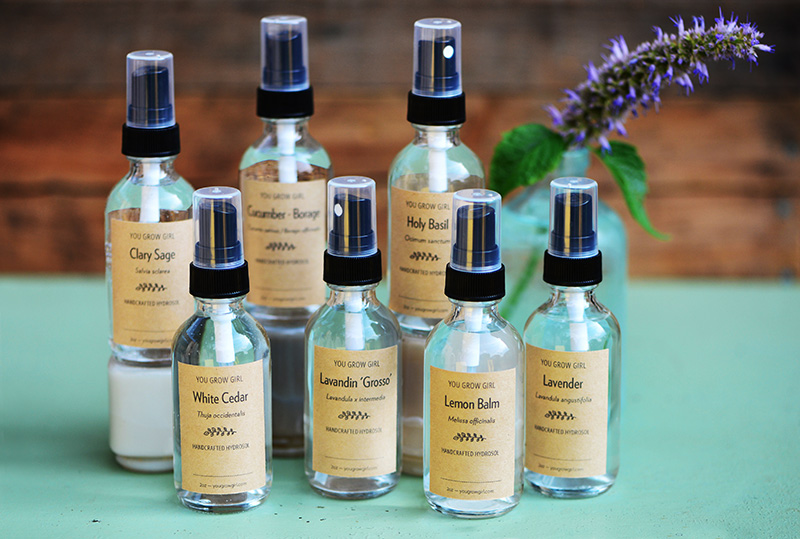
I’ve just launched a new endeavour producing small-batch distilled, preservative-free, all-natural hydrosols. All are distilled in very small, slow batches by me using plant materials that I have sourced from local, organic farmers, or grew myself using “moreganic” (no chemicals or sprays whatsoever, including the “safe” stuff) methods in my own garden.

You may recall back to five summers ago when the desire to make good quality rosewater from the bounty of roses in my garden lead me down the path to purchasing a hand-forged, copper alembic still from Portugal and learning the art of plant water distillation aka hydrosol-making. I wrote back then about my initial experiences with the process, but much learning, research, and experimentation has occurred in the years since. LOTS AND LOTS. I have been quietly doing this in the background, enjoy the fruits of my labour and sharing them with friends. I think what has captured my attention about this is that the process is art meets alchemy. There are so many small shifts and refinements that can have a profound affect on the final product. The producer’s hand is very much in the hydrosol, meaning that there is a lot of variation between products. Some things that can affect quality include: when you harvest a plant and the weather in any given year, to how much plant material goes into the still, which parts are used, the heat of the distillation, how long you allow it to run, which parts of the distillation are captures, and so on. And of course this changes from plant-to-plant so it’s been quite a learning as I have run batch-after-batch making small shifts here and there to discover what works and what doesn’t. It is because of this rigorous experimentation and dedication to every detail of the process through to storage and bottling methods that I feel very confident in the quality of the hydrosols I’m producing.
I’ve posted more details below about what hydrosols are with some key details about the process. This is a huge topic and there’s lots I could say, but I don’t want to overwhelm you with information. If you’d like to learn more I have created an FAQ called About Hydrosols on our store site and I am happy to answer any questions you may have. I will add new questions to the FAQ as they come up.

What is a Hydrosol?
Known by many names including floral waters, plant waters, hydrolates, and hydrolats, hydrosols are produced by distilling an array of plant materials — from seed to root and everything in between using a still. Distillation transforms fresh plant material into a therapeutic water that captures phytochemicals, antioxidants, plant acids, and oils. It is stronger, perhaps more complex than an herbal infusion (tisane), but much gentler than an essential oil, making it safe to spray directly onto skin without further dilution. Each hydrosol carries its own unique benefits to the skin (and beyond) that can include: nourishment, hydration, restoration and soothing, anti-inflammatory and/or anti-bacterial properties, and much, much more.

What’s the difference between a hydrosol and an essential oil?
Technically, both hydrosols and essential oils are produced via the process of distillation. However, in essential oil production, the oils and water are separated and sold separately. Many commercial hydrosols on the market are just the leftover water or byproduct of this process. In the case of my hydrosols, I bottle the whole product; the oil and water are never separated.
There are other differences as well. What makes a good essential oil doesn’t necessarily make a good hydrosol. Essential oil production tends to be a much hotter and faster distillation. My hydrosols are produced at very low temperatures, at an extremely slow pace, coming out drip-by-drip rather than in a stream. I believe that this slower, gentler process coaxes out plant constituents that would be lost otherwise, producing a more balanced product. When the plant material is harvested and the parts used are other considerations that differ. For these reasons, hydrosols that are distilled with the focus on producing a balanced, gentle, whole hydrosol are superior to those that are made as a byproduct.
How do I use hydrosols?
Usage varies depending on the therapeutic qualities of individual plants. I’ve offered suggested uses on the product page of each hydrosol.
super exciting! thank you for sharing this art with us!
You got my interest piqued. Just ordered the honeysuckle hydrosol. Can’t wait to try it!
OMG! Thanks for sharing! I could smell the lemon balm as I was reading this. Will DEFINITELY have to try!!